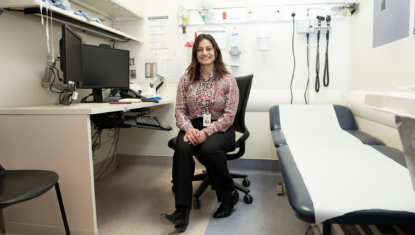03/07/2024
Ottawa, Ontario — Wednesday July 3, 2024

Asthma is the most common chronic childhood disease and a leading cause of emergency department (ED) visits and hospitalizations at CHEO, with 25% of children coming back to the ED for additional treatment. CHEO researchers are leveraging artificial intelligence (AI) to improve health outcomes, reduce strain on emergency services, and streamline treatment through specialized clinics.
“Using CHEO’s electronic health record (EHR) data over the last several years, our team of expert data scientists analyzed the health and geographic information of all the kids visiting CHEO ED for asthma related reasons,” says Dr. Khaled El Emam, Senior Scientist, CHEO Research Institute (CHEO RI). “Using this data, we are now developing a specialized machine learning algorithm to accurately predict which kids with asthma who are seen in our emergency department are the most likely to come back in the next year.”
Children with severe asthma may visit the CHEO emergency department (ED) several times over a few years. Often it isn’t until their third or fourth visit that an ED physician recognizes them as a frequent visitor and refers them to the CHEO Asthma Program. This AI prediction tool will help emergency room physicians identify which children are most likely going to have repeat visits and allow for earlier intervention. After providing specialized asthma care and education, these children can receive new treatments, enabling families to manage asthma safely at home.
“This algorithm can be integrated into the clinical workflows in real-time to improve care delivery for children with asthma in the ED,” says Dr. Dhenuka Radhakrishnan, Chief Scientific Officer at the CHEO RI, and Director of CHEO’s Asthma Program. “AI can help to accurately predict which children will have a future acute asthma visit (ED visit or hospitalization) as there is a lack of agreement or guidance on how to identify this vulnerable group.”
As one of the first known attempts in Canada to leverage AI technology in pediatric respiratory care, this innovation could be translated to pediatric centres across the country that have also adopted comprehensive EHRs. With early and accurate identification through this novel AI-driven approach, CHEO will continue to provide the best care for children and youth, by predicting these return visits to the ED more efficiently and ultimately improving the broader health system.
